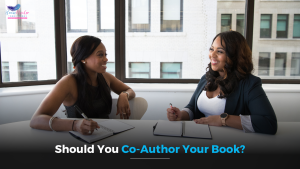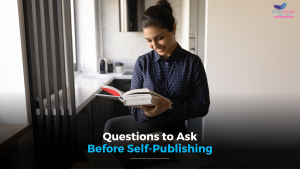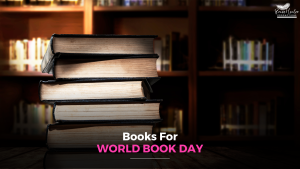Stories have been around since the beginning of time. They’re woven into the fabric of our existence, and they shape our world today. Stories are an intrinsic part of human experience, from ancient tales to modern narratives.
Has any story given you goosebumps, any thriller or suspense novel, while reading takes you to the world of imagination, provoking you to think of the best possible ending or enticing you to create your ending?
Just like the timeless tale of Cinderella, which has been reimagined in countless ways, stories have the remarkable ability to evolve and transform while preserving their essence.
Or…
The tragic tale “Romeo and Juliet” by William Shakespeare where the play portrays the ill-fated love between Romeo Montague and Juliet Capulet, whose families are embroiled in a bitter feud. Despite the intense enmity between their households, Romeo and Juliet fall deeply in love at first sight. Determined to be together, they embark on a secret marriage, but their joy is short-lived. Tragedy strikes when a series of misunderstandings and fatal mistakes lead to the untimely deaths of the young lovers, uniting their feuding families in grief and remorse. “Romeo and Juliet” serves as a heartbreaking reminder of the destructive power of hatred and the fragility of young love caught amid a tragic fate.
Reading these stories makes us feel so connected. Don’t they?
Whether you’re yearning for a classic narrative of triumph over adversity or seeking to challenge conventional norms, understanding the fundamental archetypes can help you craft your literary masterpiece.
I believe that the true essence of writing greatness lies in the intimate understanding and mastery of the story you wish to share. It’s in the delicate dance between writer and narrative, where worlds come alive, emotions are stirred, and connections are forged, that the true magic of storytelling resides.
But that being said, what are the types of stories? And how do you use them to tell a great story? In this article, we’re going to cover the five types of stories and share which tend to become best-sellers.
Five Types Of Stories You Can Use To Plot Your Book
Let’s look at the different types of stories below:
The Hero’s Journey
The Hero’s Journey is based on Joseph Campbell’s “monomyth” theory, which says that all great stories follow the same basic structure or pattern. This is true whether it’s a Greek myth or Harry Potter or Star Wars — it doesn’t matter what genre you’re writing in, as long as there’s an underlying structure that all great stories share.
Campbell says, “Every great story must follow this pattern.”
This story structure has been used in many different cultures and times. It has a basic narrative structure with stages of departure, initiation, and return. The story starts with the hero leaving his home, then goes through a series of trials or obstacles on their journey, before finally returning home at the end.
The Three-Act Structure – “Gone With The Wind” by Margaret Mitchell
This structure divides your book into three parts: beginning, middle, and end. A lot of books use this structure because it gives them a clear goal: start at point A and make it through B and C before reaching D (the climax).
So basically, its departure (the hero leaves their normal life), initiation (they are tested), and return (they come back home).
This plot is well suited for fantasy tales since it allows you to create an entirely new world for your characters to explore and interact with. This is especially helpful if you’ve never written a novel before, since it gives you a framework for your story that will make sense to readers
Some other bestselling examples could be; Star Wars, the Harry Potter series, and The Lord of the Rings series.
The Romance/Love Story
The Romance/Love Story is essentially what it sounds like it should be. It’s the story of two lovers who are separated by some sort of obstacle — often a family feud or misunderstanding — and then they must overcome this obstacle to unite as one.
It is one of the most popular genres in literature. It’s also one of the oldest, dating back to Greek mythology. And it’s no wonder why: love stories are universal and timeless. Who doesn’t want to read about star-crossed lovers overcoming impossible odds to be together?
This type of story can be very exciting, especially if it’s set against a difficult background (like war or political unrest) where there is little hope for happiness or peace in the future. This adds an element of suspense to your story as well as drama and tension between your characters as they try to overcome their obstacles together.
Pride and Prejudice by Jane Austen is one of the famous romance novels because it’s so well-written and Austen does an excellent job of showing how two people from different backgrounds can find their way together through love and compromise.
Some other bestselling examples could be; The Notebook, Me Before You, The Fault in Our Stars, Jane Eyre, or Outlander.
The Adventure
The adventure story is a classic plot structure that has been around for centuries. It follows a hero who leaves home and embarks on an adventure to some faraway land — whether it’s a physical journey or just a mental one. The hero then encounters all sorts of obstacles, from monsters to people.
It’s the plot of “Gulliver’s Travels,” by Jonathan Swift, the tale of a man who is shipwrecked on an island and ends up meeting all kinds of strange creatures along his journey. It’s also the plot of “The Odyssey.”
The adventure story follows a protagonist who sets out on a journey to get something or find someone else, but along the way, he faces many obstacles, distractions, and surprises that keep him from reaching his goal.
The hero starts strong, but as he goes through his journey, he loses power and becomes weaker until he reaches rock bottom at some point. But then he finds some kind of inner strength and comes back stronger than ever before.
Another great example is, “The Pilgrim’s Progress” by John Bunyan.
The Comedy
You probably already know that comedy is all about making people laugh. It’s not necessarily funny, but it does make you feel good and happy in the end. Comedies often have a happy ending and include romantic elements, but they are not romances. It is a great way to lighten the mood, but it’s not always the best choice for your book. If you’re writing nonfiction, comedy can be used to make a point or teach a lesson. But if you’re writing fiction, comedy can be used as a device to make your characters more likable and relatable.
There are two types of comedy stories: farce and satire. Farce is when you create an over-the-top situation with exaggerated characters that are presented in ridiculous situations. Satire is where you poke fun at something by exaggerating it to make your point more obvious.
A Modest Proposal by Jonathan Swift is one example of a funny short story. It’s satire, so it doesn’t have to be funny for it to work — but its humor certainly helps!
The Mystery
There are two types of stories: the ones you tell, and the ones that happen to you. The second kind tends to be more interesting, but they’re also harder to write about because they’re not your story.
The mystery story is about someone else’s story and how that affects your life. It is the most common type of novel.
Often, but not always, it involves a crime or murder investigation. The detective character is usually an amateur sleuth who uses his or her wits and intelligence to solve the mystery. The genre dates back to the ancient Greeks, who told tales of Oedipus solving crimes and riddles. The first modern whodunit was published in 1841 and featured Sherlock Holmes, who has become one of the most famous detectives in literature.
Other great examples of mystery stories of all time are Crime and Punishment by Fyodor Dostoevsky and The Murder of Roger Ackroyd by Agatha Christie.
Mystery stories often contain clues that readers can use to solve them before the investigator does. This is called “fair play,” which means that all clues are available to everyone reading the book, including those who cannot solve riddles or puzzles very easily.
You have to pay attention to what people say and what they mean when they say it. The end of these stories usually has a twist where everything changes unexpectedly!
End Note
As fascinating as it may sound, crafting a masterpiece is no easy feat. However, by using the right story types as your foundation, you can create a captivating narrative that hooks your readers. Even if you haven’t worked out all the details of your plot yet, knowing the story types you want to incorporate will give you a strong starting point to build upon.
As you embark on your journey to craft your masterpiece, remember that your beliefs shape who you are and what you can achieve as a writer. To further enhance your writing journey, check out our companion blog: “10 Tips for Writing a Bestselling Book.” It’s filled with practical advice and valuable insights that can help you on your path to literary success.
Now is the time to pick up your pen and rewrite your story. Let your unique voice shine and share your extraordinary tale with the world. Your story is waiting to be written, and the possibilities are endless.








